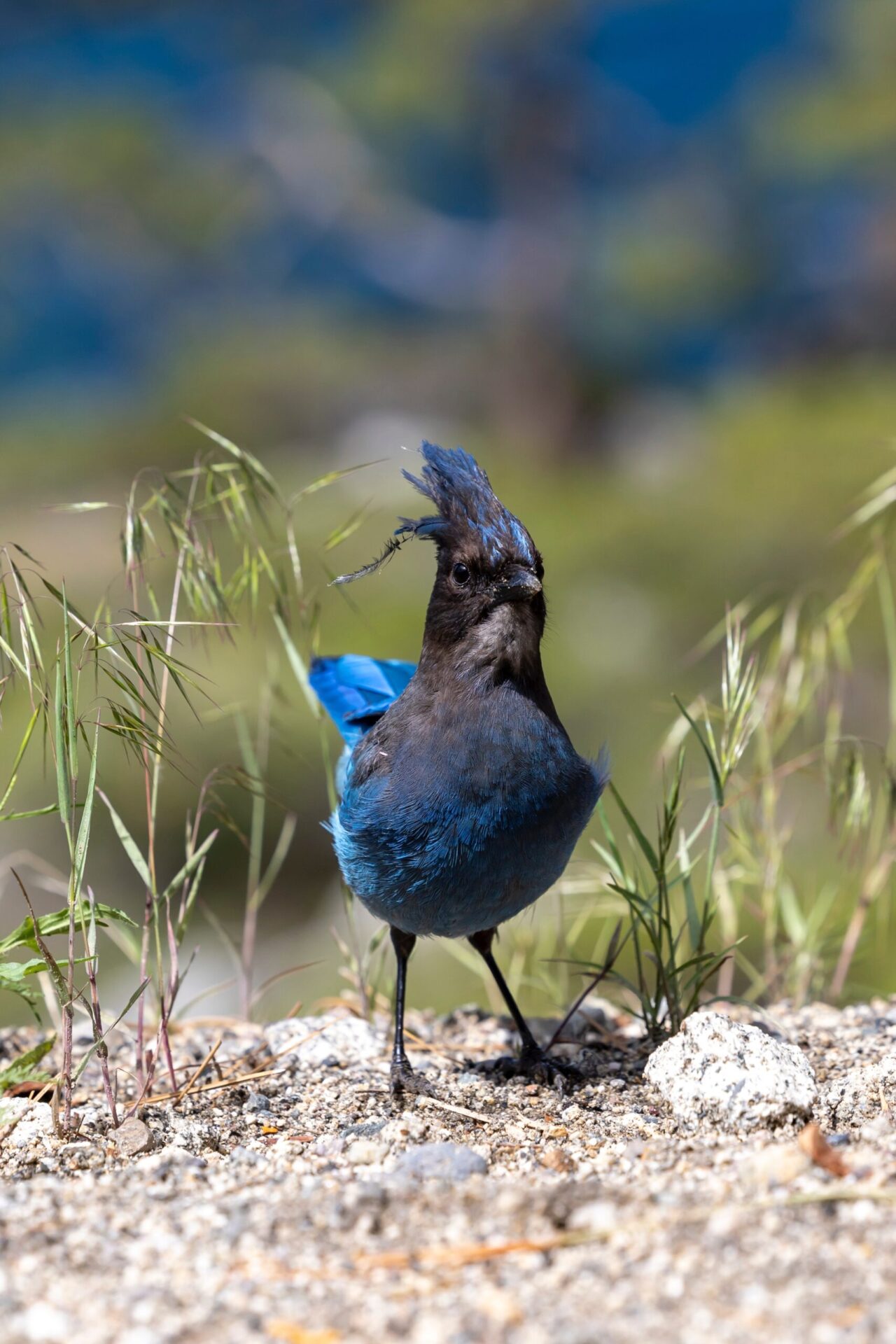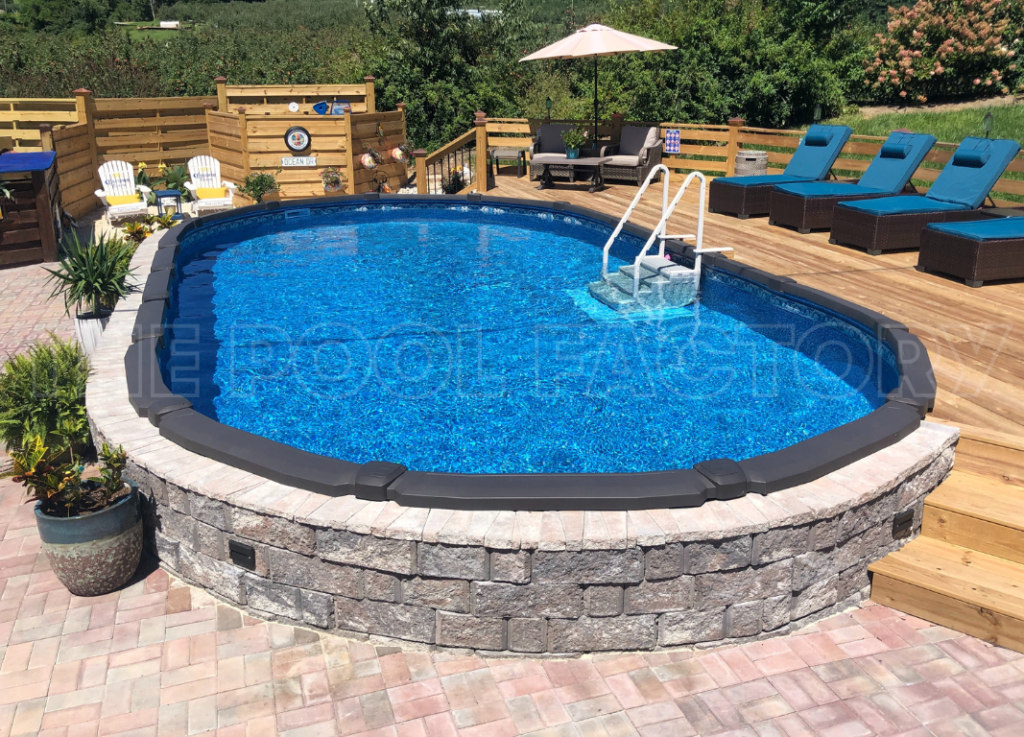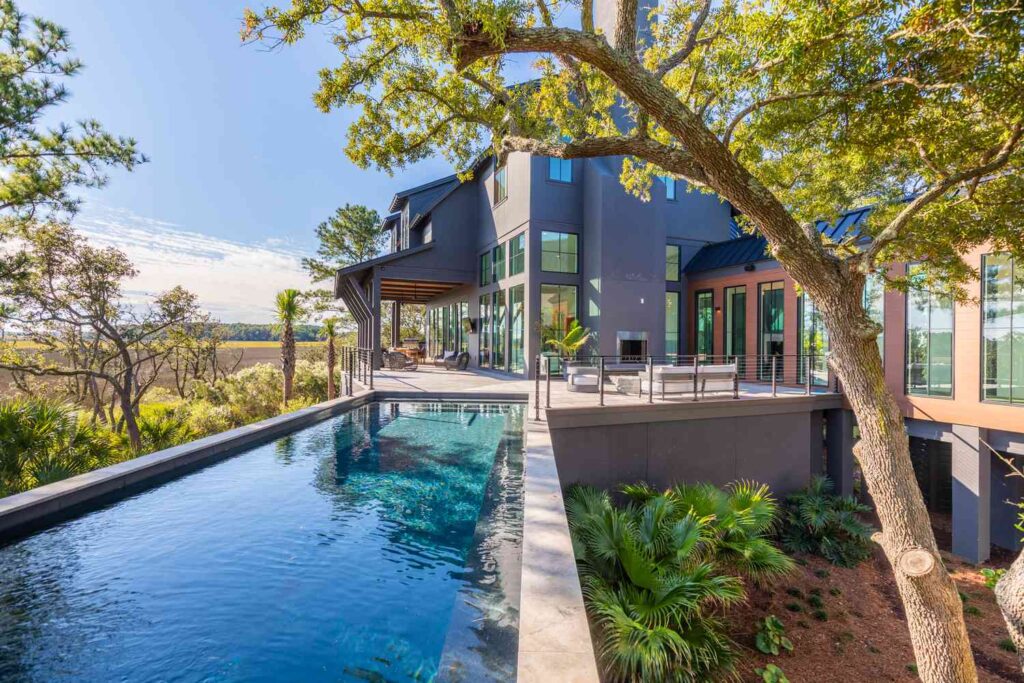If you’re looking to spruce up your above ground pool area, incorporating rocks and hardscapes can provide a visually stunning and functional addition. Adding these natural elements can enhance the overall aesthetic appeal of your pool, creating a more inviting and relaxing atmosphere. Whether you’re aiming for a tropical oasis or a modern retreat, the strategic placement of rocks and hardscapes can transform your above ground pool into a true outdoor haven.
Choosing the Right Rocks and Hardscapes
Consider the Size
When choosing rocks and hardscapes for your landscape design, it’s important to consider the size of your space. Larger rocks can create a grand and dramatic effect, while smaller rocks can add a subtle touch. Take into account the overall dimensions of your yard and the scale of any existing structures or features. Ideally, you want rocks and hardscapes that complement the size of your outdoor space, ensuring a harmonious and balanced look.
Look for Durable Materials
Durability is key when it comes to selecting rocks and hardscapes for your landscaping project. They should be able to withstand the elements and the test of time. Look for rocks and hardscapes made from materials such as natural stone, concrete, or composite materials that are known for their strength and longevity. This will ensure that your landscape remains intact and beautiful for years to come.
Select the Right Colors
Rocks and hardscapes come in a variety of colors, allowing you to choose options that will complement your outdoor aesthetic. Neutral tones like gray, beige, and brown can create a natural and timeless look, while vibrant colors like red or blue can add a pop of excitement to your landscape. Consider the overall color scheme of your outdoor space and select rocks and hardscapes that will enhance and blend seamlessly with the existing surroundings.
Think About Texture
Texture is an important factor to consider when incorporating rocks and hardscapes into your landscape design. Smooth surfaces can create a more modern and sleek look, while rough or jagged textures can add a rustic or natural feel. Think about the overall style and theme you want to achieve and choose rocks and hardscapes that match that aesthetic. By considering texture, you can add depth and visual interest to your outdoor space.
Designing with Rocks and Hardscapes
Create a Natural Look
One of the benefits of incorporating rocks and hardscapes into your landscaping is the ability to create a natural and organic look. Use rocks to create pathways that wind through your garden, mimicking the natural flow of a meandering stream. Combine different sizes and shapes of rocks to create a visually pleasing arrangement that resembles a natural rock formation. By creating a natural look, you can seamlessly blend your landscape with the surrounding environment.
Use Rocks as Bordering
Rocks can be used as borders or edging to define different areas in your outdoor space. They can separate flower beds from walkways or define the perimeter of your patio or deck. By using rocks as bordering elements, you can add structure and dimension to your landscape, making it visually appealing and organized. Choose rocks that complement the rest of your design and arrange them in a way that enhances the overall aesthetic.
Build a Retaining Wall
If you have uneven terrain or want to create different levels in your landscape, building a retaining wall with rocks and hardscapes can be a great option. A retaining wall not only adds functionality by preventing soil erosion, but it also adds depth and visual interest to your outdoor space. Choose rocks and hardscape materials that match your overall design and opt for a retaining wall that complements the natural contours of your yard.
Construct Steps or Stairs
Rocks can also be used to create steps or stairs in your landscape, providing both functionality and beauty. Whether you have a sloped yard or want to create an elevated pathway, incorporating rocks into staircases can add a unique and charming element to your outdoor space. Pay attention to the size, shape, and texture of the rocks to ensure safety and ease of use.
Create a Rock Waterfall
For those looking to add a touch of tranquility and serenity to their outdoor space, consider creating a rock waterfall. This feature can be a focal point in your landscape and provide soothing sounds of flowing water. With carefully placed rocks and hardscapes, you can design a waterfall that looks natural and blends seamlessly with the surrounding environment. Add some water-loving plants and you’ll have a serene oasis right in your own backyard.
This image is property of i.pinimg.com.
Plants That Complement Rocks and Hardscapes
Selecting the Right Plants
When designing your landscape with rocks and hardscapes, it’s important to choose plants that will complement these features. Consider plants with interesting textures and colors that contrast or harmonize with the rocks and hardscapes. For example, succulents with their unique shapes and vibrant hues can beautifully complement the rugged look of rocks. Evoke a sense of unity and harmony by selecting plants that enhance the overall aesthetic of your outdoor space.
Choosing Low-Maintenance Options
If you prefer a low-maintenance landscape, opt for plants that are hardy and require minimal attention. Look for native plants that are well-suited to your specific climate and soil conditions. These plants are typically more resistant to pests and diseases and often require less water and maintenance. By choosing low-maintenance plants, you can spend more time enjoying your rocks and hardscapes rather than tending to high-maintenance foliage.
Consider the Ideal Placement
When incorporating plants into your landscape with rocks and hardscapes, consider their ideal placement to maximize their visual impact. Place taller plants behind rocks to create depth and provide a backdrop for the rocks. Use trailing plants or groundcovers to soften the edges of rocks or to fill in gaps between hardscape materials. By strategically placing plants, you can create a cohesive and harmonious design that showcases the beauty of both the rocks and the plants.
Maintenance and Care for Rocks and Hardscapes
Clearing Debris Regularly
To keep your rocks and hardscapes looking their best, it’s important to clear debris regularly. Leaves, twigs, and other organic matter can accumulate on the surface, dulling the appearance of the rocks. Use a leaf blower, broom, or rake to remove any debris and keep your landscape looking clean and pristine.
Weed Control
Weeds can quickly detract from the beauty of your rocks and hardscapes. To prevent weeds from taking root and growing between the rocks or hardscape materials, use a weed barrier or landscape fabric. This will help prevent weeds from sprouting and make maintenance much easier in the long run. Additionally, regularly inspect your landscape for any weeds that do manage to pop up and promptly remove them to prevent further spreading.
Preventing Weed Growth
In addition to using a weed barrier, there are other preventive measures you can take to minimize weed growth. Apply a layer of mulch around your rocks and hardscapes to suffocate any weed seeds and limit their access to sunlight. Mulch not only helps prevent weed growth but also helps retain moisture in the soil, benefiting your plants. Choose an organic mulch that complements your landscape design and replenish it as needed.
Inspecting for Loose Stones
Just like any other construction material, rocks may shift or become loose over time. Regularly inspect your rocks and hardscapes for any signs of movement or instability. If you notice any loose stones, reposition them and ensure that they are securely in place. This will help maintain the integrity of your landscape and prevent potential hazards.
Cleaning and Sealing Hardscapes
If you have hardscape features such as concrete or pavers, it’s important to clean them regularly to maintain their appearance. Use a gentle cleanser and a soft brush to remove any dirt or stains. Additionally, consider applying a sealer to your hardscapes to protect them from staining, fading, and weathering. Follow the manufacturer’s instructions for proper application and reapply the sealer as recommended.
This image is property of blog.thepoolfactory.com.
Safely Incorporating Rocks and Hardscapes
Ensuring Accessibility
When incorporating rocks and hardscapes into your landscape design, it’s important to ensure accessibility for everyone. Smooth and even pathways should be included to allow for easy movement throughout your outdoor space. Consider the needs of individuals with mobility challenges and create ramps or gradual slopes where necessary. By designing with accessibility in mind, you can make your landscape enjoyable for everyone.
Avoiding Trip Hazards
Rocks and hardscapes should be carefully positioned to avoid creating trip hazards. Avoid placing rocks in high-traffic areas or areas where people are likely to stumble or trip, such as near pools or walkways. Ensure that the edges of hardscape materials are smooth and properly finished to prevent any potential injuries. Safety should always be a top priority when incorporating rocks and hardscapes into your landscape design.
Creating Safe Edges
In addition to avoiding trip hazards, it’s important to create safe edges when using rocks and hardscapes. Sharp or jagged edges can be dangerous, especially for children or pets. Consider using rounded or smoothed rocks and hardscape materials to minimize the risk of injury. Additionally, be mindful of any gaps or spaces between rocks or hardscape materials and address them promptly to prevent potential accidents.
Choosing Smooth Surfaces
When selecting rocks and hardscapes, choose materials with smooth surfaces whenever possible. Smooth surfaces are less likely to cause injuries if someone were to fall or trip. Opt for materials like polished rocks or pavers with a smooth finish to ensure safe and comfortable use of your outdoor space. By choosing smooth surfaces, you can avoid any potential hazards and enjoy your rocks and hardscapes worry-free.
Budgeting for Rocks and Hardscapes
Determining the Costs
Before starting any landscaping project, it’s important to determine the costs associated with incorporating rocks and hardscapes. Consider the size of your outdoor space, the materials you want to use, and any additional features or structures you plan to include. Research the prices of the rocks and hardscape materials you’re interested in, as well as any additional costs such as labor or delivery. By accurately determining the costs, you can establish a budget and avoid any unexpected expenses.
DIY vs. Hiring a Professional
When budgeting for rocks and hardscapes, consider whether you will undertake the project as a DIY endeavor or hire a professional landscaper. DIY projects can potentially save money on labor costs but require time, effort, and skill. Hiring a professional ensures a high-quality installation but can be more expensive. Assess your own abilities, resources, and time availability to determine the best option for your budget and the desired results.
Consider Longevity and Value
When budgeting for rocks and hardscapes, it’s important to consider the longevity and value they bring to your outdoor space. While high-quality materials may have a higher upfront cost, they can provide long-lasting beauty and durability, ultimately saving you money in the long run. Consider the lifespan of the materials and weigh it against the initial cost to determine the best value for your budget. Investing in quality rocks and hardscapes can enhance the overall aesthetic and increase the value of your property.
This image is property of blog.thepoolfactory.com.
Obtaining Permits and Meeting Regulations
Check Local Building Codes
Before starting any construction involving rocks and hardscapes, it’s crucial to check your local building codes and regulations. Certain projects may require permits or adhere to specific guidelines set by your municipality. Check with your local authorities to ensure that you are in compliance with any building codes or regulations. By obtaining the necessary permits and following the regulations, you can avoid potential fines or issues down the line.
Obtain Necessary Permits
Depending on the scope of your landscape project, you may need to obtain permits from your local government or homeowner’s association. This is especially important for larger projects that involve structural elements such as retaining walls. Research the specific permits required for your area and be sure to submit any necessary applications well in advance. Completing this step ensures that your project is legal and adheres to all regulations.
Comply with Safety Standards
Safety should always be a priority when incorporating rocks and hardscapes into your landscape design. Ensure that all structural elements, such as retaining walls or stairs, meet safety standards and guidelines. Follow any specific requirements regarding heights, materials, or structural integrity. By complying with safety standards, you can ensure the longevity and stability of your landscape while keeping everyone who visits your outdoor space safe.
Inspiring Ideas for Rocks and Hardscapes
Incorporate Boulders or Large Rocks
For a bold and eye-catching feature, consider incorporating boulders or large rocks into your landscape design. These impressive natural elements can serve as focal points or anchor specific areas of your outdoor space. Place them strategically to create visual interest and add a touch of drama to your landscape. Boulders or large rocks can truly make a statement and provide a unique and natural element to your overall design.
Create a Rock Garden
A rock garden is a beautiful way to showcase rocks and hardscapes in your landscape. Choose a location with good drainage and incorporate different sizes and shapes of rocks to create a visually appealing arrangement. Combine rocks with drought-tolerant plants or ornamental grasses for a low-maintenance and water-wise garden. A rock garden can add texture, depth, and a touch of tranquility to your outdoor space.
Use Pavers or Flagstones
Pavers or flagstones are versatile hardscaping materials that can be used in a variety of ways. Create a patio or outdoor seating area using pavers, arranging them in interesting patterns or designs. Use flagstones as stepping stones to guide visitors through your outdoor space or to create a natural pathway. These hardscape materials are durable and come in a range of colors and textures, allowing you to customize your design to suit your personal style.
Combine Rocks with Greenery
To create a harmonious and balanced landscape, combine rocks and hardscapes with greenery. Plant small shrubs or perennials around rocks to soften their edges or place them strategically near hardscape features for added visual appeal. The contrast between the rugged texture of rocks and the lush green foliage of plants can create a delightful and enticing outdoor space. Experiment with different plant selections to find the perfect combination that complements your rocks and hardscapes.
This image is property of www.thespruce.com.
Rock and Hardscape Maintenance Tips
Removing Stains or Discoloration
Over time, rocks and hardscapes can develop stains or discoloration due to exposure to the elements or other factors. To remove stains, use a mild cleaner specifically formulated for the type of rock or hardscape material you have. Follow the manufacturer’s instructions for proper application and rinse thoroughly. If the stains persist, consult a professional for advice and assistance. Regularly cleaning and maintaining your rocks and hardscapes will help keep them looking their best.
Repairing Damaged Areas
In the event of any damage to your rocks or hardscape materials, it’s important to address the issue promptly to prevent further deterioration. Cracked or chipped rocks should be replaced or repaired to maintain the integrity and safety of your landscape. Consult with a professional if you are unsure how to properly repair damaged areas. By addressing repairs as soon as they arise, you can keep your rocks and hardscapes in excellent condition for years to come.
Preventing Erosion
Erosion can be a concern when using rocks and hardscapes in your landscape, especially if you have sloped areas or live in an area with heavy rainfall. To prevent erosion, consider adding additional drainage elements such as French drains or gravel-filled trenches to redirect water runoff. Additionally, strategically place rocks or hardscapes to create barriers that help slow down or redirect water flow. Taking preventive measures against erosion will help preserve the integrity and stability of your landscape.
Winterizing Hardscapes
If you live in an area with harsh winter conditions, it’s important to take steps to winterize your hardscapes. Remove any debris or leaves from the surface and clean them thoroughly. Apply a sealant specifically designed for your hardscape materials. This will provide an extra layer of protection against freeze-thaw cycles and help prevent damage from ice or snow. By properly winterizing your hardscapes, you can ensure their longevity and keep them looking beautiful year after year.
Conclusion
Incorporating rocks and hardscapes into your landscape design can greatly enhance the beauty and functionality of your outdoor space. By carefully choosing the right rocks and hardscape materials, designing with creativity and safety in mind, selecting plants that complement your vision, and maintaining your landscape regularly, you can create a stunning and inviting outdoor environment. With the proper budgeting, permits, and maintenance, your rocks and hardscapes will continue to bring joy and aesthetic appeal to your home for years to come. So start exploring the wonderful world of rocks and hardscapes, and transform your outdoor space into a true oasis.








